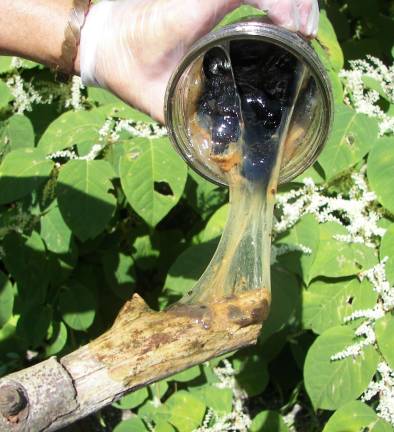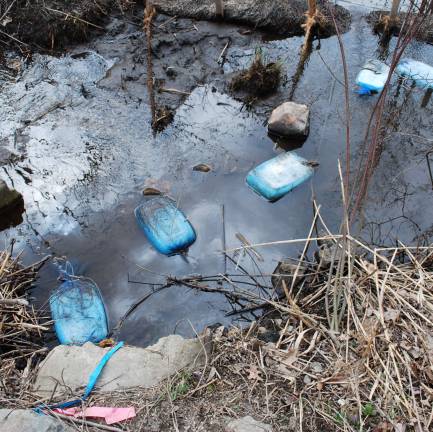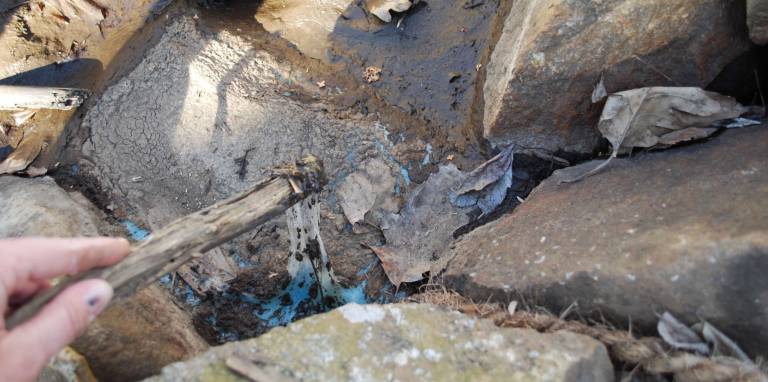An eye on the wetlands



By Jan Baker
VERNON — At the Aug. 27 council meeting, Vernon Environmental Commission President Craig Williams addressed the township council and mayor regarding a lack of progress in cleanup efforts in the wake of the Tennessee Gas Pipeline (TGP) project in the township. The commission showed a video of what has been found in the wetlands area through which the pipeline expansion was placed. The area shown on the video roughly covers where the pipeline comes down the mountain, under Canistear Road, through the wetlands that are near to Highland Lake.
Pipeline officials told the Northjersey Pipeline Walkers that the work was completed. However, the walkers found waste material left behind that they believe could pose a health risk to area residents. The Northjersey Pipeline Walkers are a group of environmentally-minded residents who monitor the pipeline.
The video showed images that Williams said were taken within two weeks prior to the council meeting and that every member of the environmental commission had witnessed. Williams pointed out the "toxic pillows" which are supposed to soak up contaminates in the streams and wetland areas and be removed and replaced once their effectiveness has reached its peak. The pillows were deployed to absorb toluene, a petroleum-based substance that was used to flush out the pipeline.
Instead, what has been left behind are used toxic pillows that have degraded into a gelatinous “goo” which can only be seen if you are right on top of it. The degraded pillows turn a bluish color and are thick and gooey to the touch.
These pillows are also referred to as "lock logs" and in some places are tied to a wooden post to float on the surface of streams or standing water.
During a recent outing, Beveryly Budz and Diane Wexler - who both belong to the Environmental Commission and the Northjersey Pipeline Walkers - pointed out a stream they said contains toluene that empties into Highland Lake through a pipe. On the lake side of the pipe are yellow floating barriers arranged in a semi-circle. It is unclear from looking at them whether the barriers have any lock logs attached to keep the toluene that is in the stream from going into the lake.
Because some of the affected property belongs to the Newark Watershed, Councilmember Pat Rizzuto suggested that the Environmental Commission contact the watershed. Newark Mayor Corey Booker was also contacted and soon after TGP personnel were dispatched to the area to find the lost lock logs that were marked by the walkers and the Environmental Commission.
During an inspection of the area on Aug. 31 by Budz and Wexler, it appeared that some of the marked lock logs were found, marked and removed. However, there were still remnants left of some of those logs. Also remaining is a blue sheen that can be seen in areas on top of standing water and in streams in the wetlands areas. Budz said that this is an indication that not all of the toluene has been removed.
The walkers took samples of the degraded pillows for testing - at a cost of $800 - that indicated high toluene content. They have repeatedly been asking TGP to do further testing to determine whether the logs have been effective enough to clean up the area.
Councilmember Dan Kadish agreed that further testing needs to be done and said he felt whatever personal money was spent for previous tests should be paid back to the walkers and the next budget should have funds made available for any future testing.
More information on the Northjersey Pipeline Walkers can be found at www.northjerseypipelinewalkers.com.